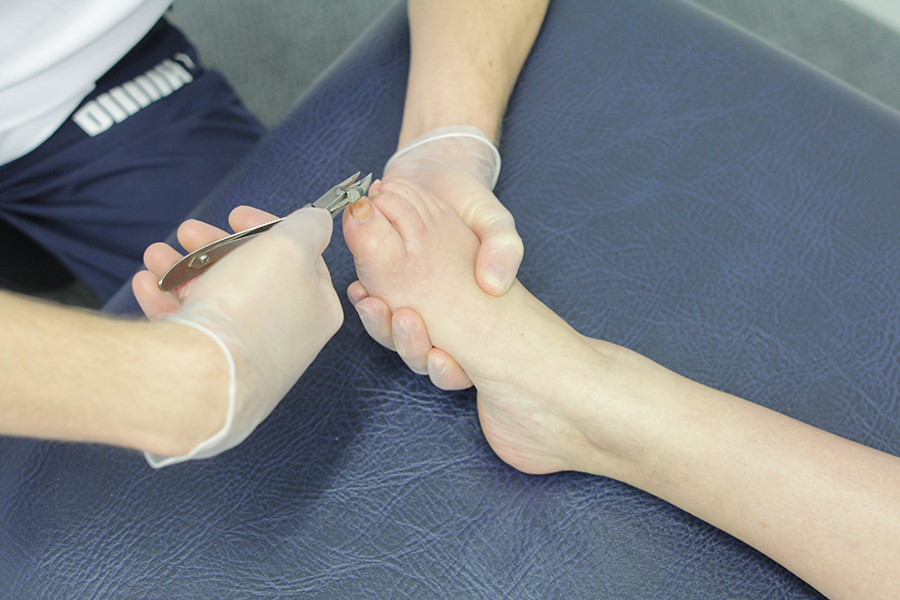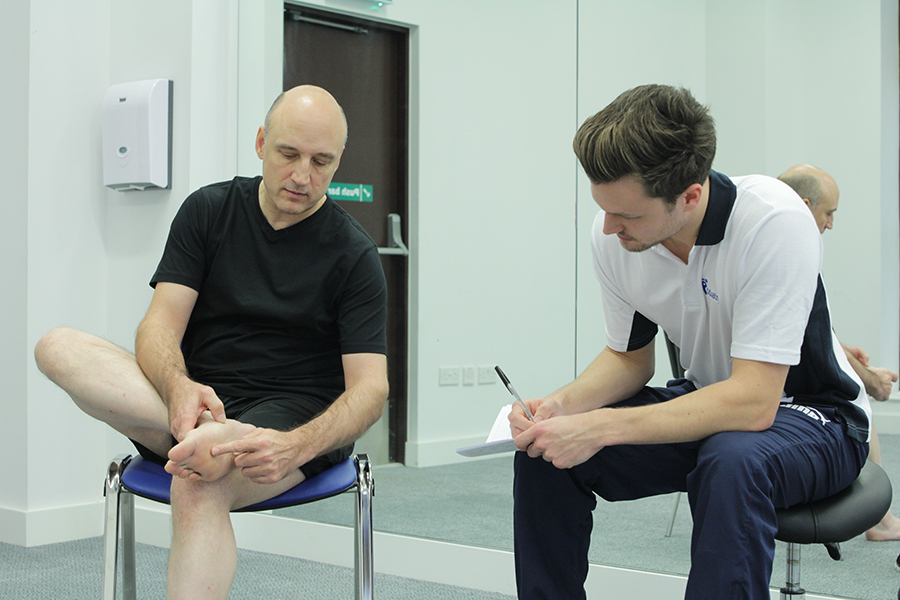Fungal nails
Download our PACT® Med fungal nail information pack

PACT
Med fungal Nail Therapy
Download our Fungal nail treatment information pack

Fungal nail
treatment
A fungal nail is an infection of the nail plate, it is not considered harmful, however it is often unsightly, if left untreated the infection can spread to other toes and to the nail matrix (the nail root). Once the infection has penetrated the nail root, this causes a permanent damage of the matrix, which can result in a permanently disfigured nail. As it is an infection if you or a family member has it, other members of the family may be at increased risk of acquiring fungal nail infection.
What are fungal nails?
Fungal nail (onychomycosis) is a type of infection. This infection is not bacterial but instead is caused by a fungus which can cause the nail to become thickened, crumbly and discoloured. A number of different fungi can cause fungal nail.
Fungi thrive in warm, moist dark environments; therefore footwear provides a perfect breeding ground. The big toe nail is most commonly affected, as it is often the most likely to be damaged, providing an easier portal of entry for the infection to enter.
What causes fungal nails?
Fungal nails occur when fungi which infects the nail. The infection enters when the nail plate is damaged, this is how the fungus invades the nail, and it then spreads due to the dermatophytes ability to take nutrients from keratin. Keratin is a protein found in the skin and nail
There are two types of fungi responsible for fungal nails:
- Yeast
- Dermatophytes
It is important that these two are distinguished from one another, as the treatment is different for the yeast and dermatophyte infections

Who gets fungal nails?
Anyone can contract a fungal nail infection; however, some people are more at risk of fungal nails than others, and these include the following groups
- Older people (over 55)
- People with diabetes (twice as common)
- Those with sweaty feet
- Athletes and people who frequent gyms and swimming pools
- Living with someone who has a fungal nail
- History of athlete's foot
- Nail that has been damaged
- Psoriasis
- Weakened immune system
- Plantar-palmar hyperhidrosis
- Peripheral vascular disease (poor circulation)
What are the signs and symptoms of fungal nails?
The signs of a fungal nail vary, but may include:
- Thickened nails
- Discoloured nails
- Debris beneath the nail plate
- Cracks in the nail
- Crumbing nail
Types of fungal nails:
There are different types of fungal nail. Each type is named according to the site and amount of nail infected. These include;
Distal subungual onychomycosis:
- Infection is at the tip of and underneath the nail, typically this affects the outside corner. This is the most common.
Proximal subungual onychomycosis:
- Infection is at the base of the nail. Often this type of infection presents with red and inflamed surrounding skin. This type of infection is more common in those with a weakened immune system and less common in healthy individuals.
White superficial onychomycosis:
- Begins on the surface of the nail as opposed to underneath. White patches on the surface of the nail are characteristic of this infection. It is the second most common.
Candida Onychomycosis:
- Is caused by yeast, usually begins at the cuticle and affects the surrounding skin. The infection can produce white, green or brown discoloration of the nail. Usually people with this type of infection will have a yeast infection elsewhere in the body
Total dystrophic onychomycosis:
- Total dystrophic onychomycosis describes the more advanced stage of any of the above. This name is given when the entire nail is affected. Sometimes this can damage the nail matrix (the root); if this happens the result may be a permanently disfigured nail.
How are fungal nails diagnosed?
Your podiatrist can usually diagnose whether or not you have a fungal nail infection based on the signs and symptoms and an examination of the feet and nail. Sometimes it is necessary for a sample of nail to be sent away for investigation.
If the nail is sent to a laboratory for investigation, the results take around six weeks for completion.
Benefits of podiatry treatment for fungal nails
The podiatrist can advise you on treatment, as well as provide information and advice on how to prevent the infection from either spreading or recurring. If nails are thickened your podiatrist can thin the nail(s) making them less unsightly. Thinning the nail will also allow any topical antifungals to penetrate the nail; making topical anti-fungal treatment more effective.
What would podiatry for fungal nails involve?
Following assessment, which includes recording a medical history as well as a history of the problem. This information, along with examination of the affected nail(s) and an assessment of the foot will enable the podiatrist to usually reach a diagnosis.
There are a number of treatments for fungal nails, this is dependent upon the extent and severity of the infection, and the individual patient. The treatment plan will be will be one that is mutually agreed between the patient and the podiatrist, and in some cases the GP. Please see following for further information on treatment options:
- Fungal nails treatment
- Thick nails treatment
- Nail reconstruction
- Nail surgery
- Referral if necessary
- Oral anti-fungal medications
- Topical anti-fungal medications
- Advice and education
- Footwear advice
- PACT® med fungal nail therapy (mild to moderate infections)
- Lacuna method for fungal nails (mild to moderate infections)
It is important to remember that the treatment of fungal nail takes time and patience; this is because it takes time for new, uninfected nail to grow through. If the whole nail is infected this can take up to 18 months.

Summary fungal nail infection
A fungal nail is a type of infection caused by dermatophytes or yeast. Some people are more susceptible to fungal nail than others. Nails may appear thick, yellow and cracked, with debris beneath the nail plate. There are a number of treatments for fungal nail, your podiatrist will advise you on the one most suitable for you.
To arrange an assessment with one of our podiatrists please email office@chiropody.co.uk or 0330 088 4222
Take a look at some of our previous patients:
Save 5% by booking an appointment online.



We work with:

Individuals

Organisations

Health professionals
Get in Touch!
0330 088 4222
If you would like to speak to one of our specialists then please complete this form.
We are open 7 days a week












